I am going to post about a six artists whose work I admire. They are also artists that you might not be familiar with. I say that because as I have tried to find more information about them, I haven’t found nearly as much as I would have liked. Some of the pieces here I come back to again and again to learn.
It is one of the great joys in life to discover a new artist that inspires. If you are already familiar with all of these artists then your life is that much richer for it. If you are not familiar with them… well just don’t have a mouth full of milk while viewing or you might spray it all over your monitor. These are spit-take worthy paintings.
Some of the images are quite large, so be sure to click through them or download to see them full-size.
Gyula Benczúr – (1844 – 1920) He was a well known Hungarian painter, especially among the aristocracy. I had not seen his work until about 7 years ago and was blown away by the movement, the textures, the flesh, the colors…
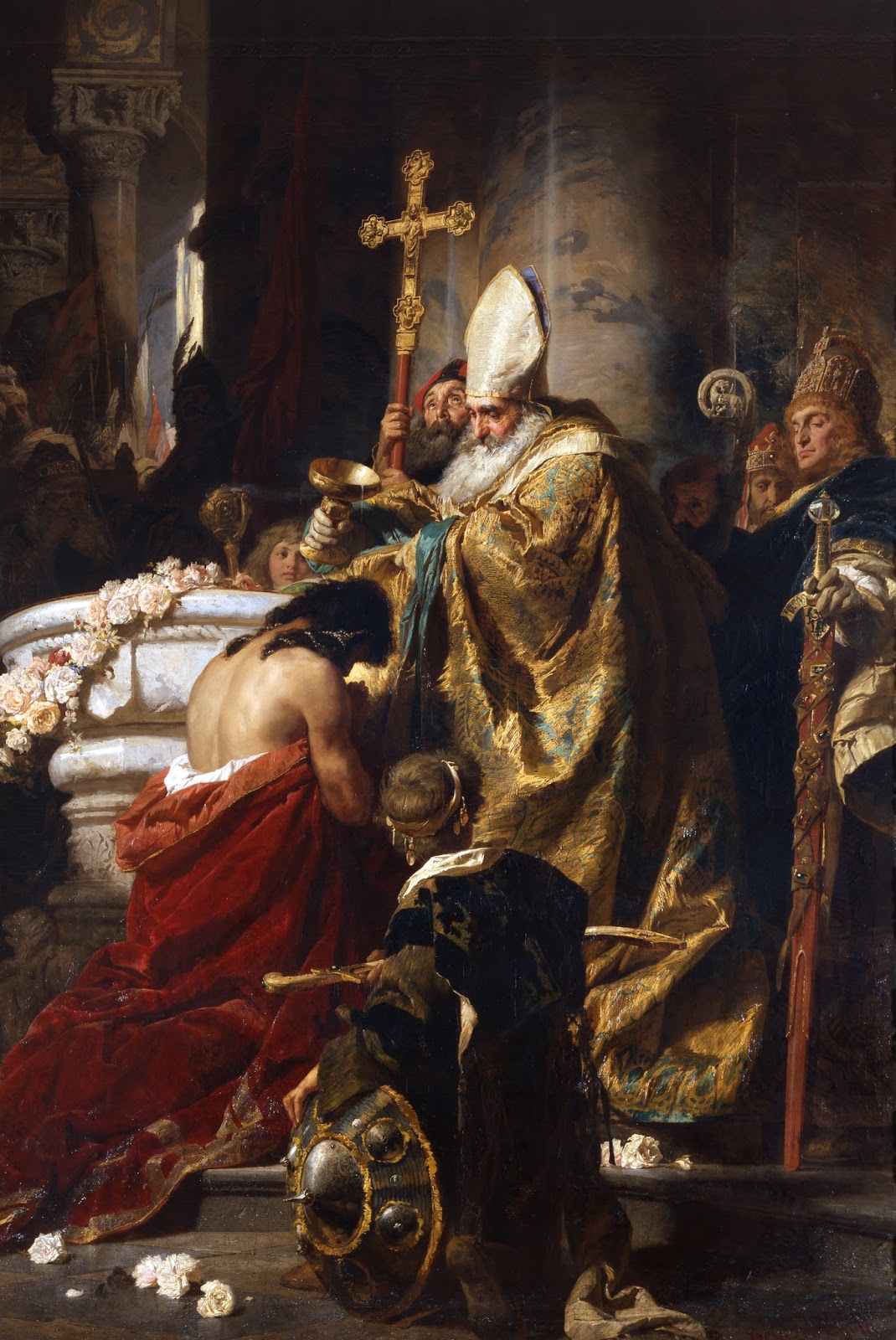 |
| Gyula Benczúr – Baptism of Vajk |
Look at these faces, and the texture in the vestiture. Unreal. I hope to paint a face as wonderful as either of these. The foreground figure is that of the Bishop Adalbert of Prague.
The painting below is titled Reoccupation of Buda Castle in 1686. It is the kind of painting that rewards hours of viewing. I love the different surfaces, all rendered with incredible skill. I have also long been a fan of these massive historical paintings that were no doubt political, depicting local leaders as heroic figures from the past peeking out at the viewer astride great horses. Look at the friar holding up his crucifix to some poor prisoner. The feathers around the fallen standard, the bronze cannon on the lower left and the big broken wheel bound by iron in the foreground…
 |
| Gyula Benczúr – Reoccupation of Buda Castle in 1686 |
Vasily Polenov – (1844 – 1927) A Russian painter who is known both for his landscapes and his biblical paintings.
The painting below depicts a scene from the bible. It has a wonderful Russian feel to it. The faces and the clothing is atypical of the many western european biblical depictions that seem to dominate our consciousness.
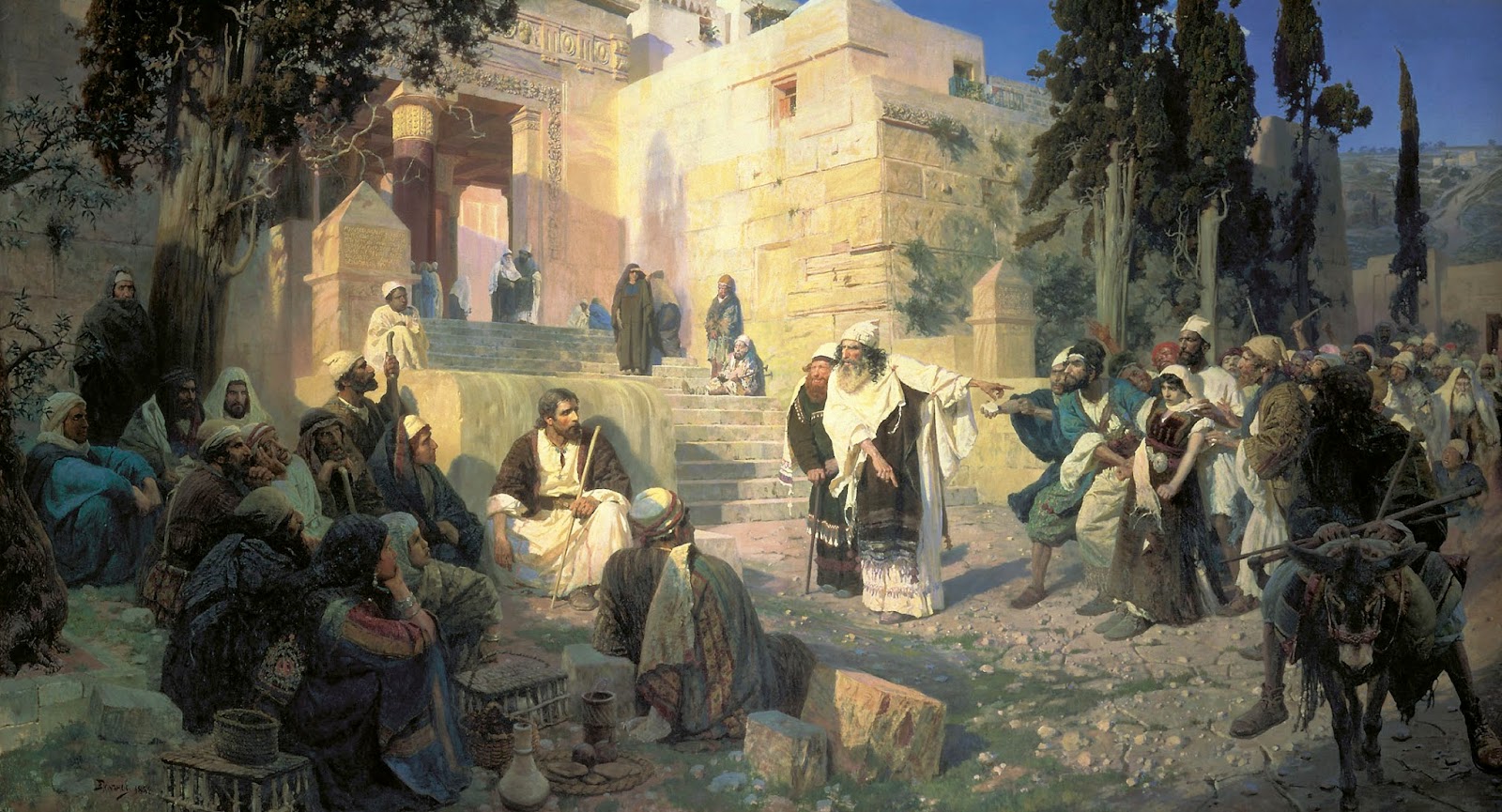 |
| Vasily Dmitrievich Polenov – Woman taken in Adultery |
Gustav Bauernfeind – (1848 – 1904) I first came across Bauernfeind in the now wandering collection of the Dahesh Museum. He was a German painter, considered to be the premier Orientalist of his country.
This painting, Jaffa, Recruiting of Turkish Soldiers in Palestine, depicts conscripts being taken off to join the army. Wives and family wave them off. This is a great example of the power of painting from life or from an actual location. There are so many details here that could just not be imagined. Look at the complexity of the sea wall, slowing leaning and eroding away. The way the steps leading down to the beach have been worn in the middle, irregular in size. The water is painted with brevity, but accuracy.
The impression of light being cast and occluded is subtle and impressive. Look at how there is a soft shadow cast by a cloud out of view that darkens the ships in the middle background, creating a good backdrop for the brighter, closer passages. There are many faces and stories depicted within the painting. Look at the desperate mother in the water, holding her infant child out for his father to see as he is hauled out to sea. I love paintings with a great stories behind them. This painting makes me want to burrow into a good history book.
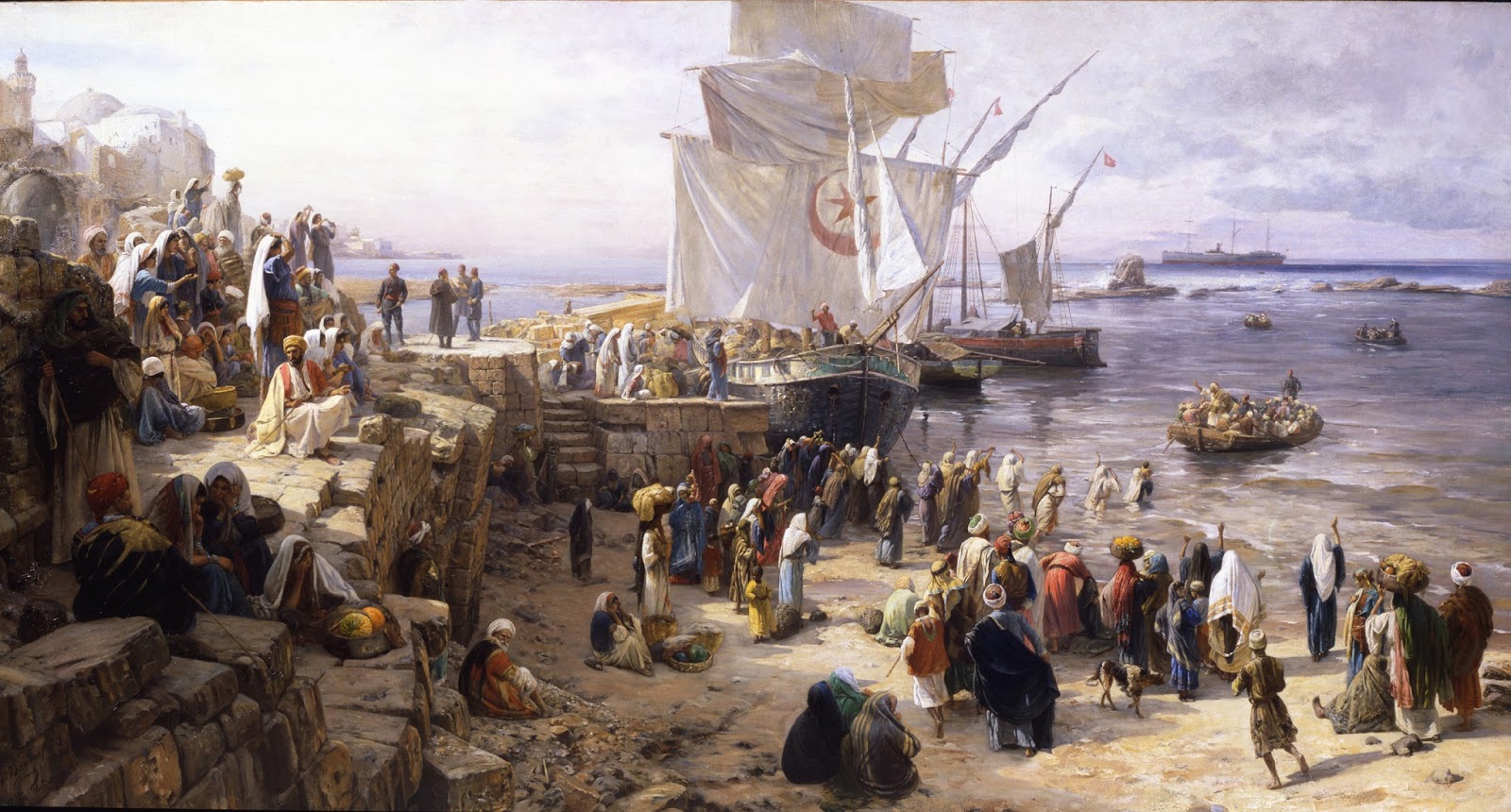 |
| Gustav Bauernfeind – Jaffa, Recruiting of Turkish Soldiers in Palestine |
More information about this painting on the Dahesh site here.
José Casado del Alisal – (1832 – 1886) – Spanish painter, known mostly for his historical paintings. Difficult to find good information on this artist, at least in English.
It doesn’t matter though, because the painting below needs no translation. Bad things are afoot and the guys on the stairs can see that heads have rolled, been picked up and hung like some kind of apocalyptic Christmas ornament, and if they don’t shape up they might just be next.
 |
| José Casado del Alisal – Bell of Huesca |
These are the faces of men reconsidering dissent and pondering a change of undergarments.
Lionel Royer – (1852 – 1926) – French painter and student of Bouguereau and Cabanel.
I would really love to have a book on Royer. It is really difficult to find good reproductions of his work, and I suspect that there are some real masterpieces out there that have yet to see the internet.
The painting below is titled Vercingétorix Throwing his Weapons at the Feet of Caesar. I think it is a brilliant composition, the mighty Vercingétorix carries the whole left half of the painting while Caesar is surrounded by his enrourage in order to balance out the image. I love the use of atmospheric perspective here, especially on the figures on the right. Look at the higher contrast, saturated figures in the foreground. By the time we get to the commanders and soldiers behind Caesar, the value and saturation ranges become much more compressed.
This painting is just cool. Look at that horn in the foreground on top of the shield. Even the horse is bowing to mighty Caesar. The profile of the Roman soldier on the right with the stick to the throat of the prisoner on the ground is classic. You could cut Carrera marble with a nose that strong.
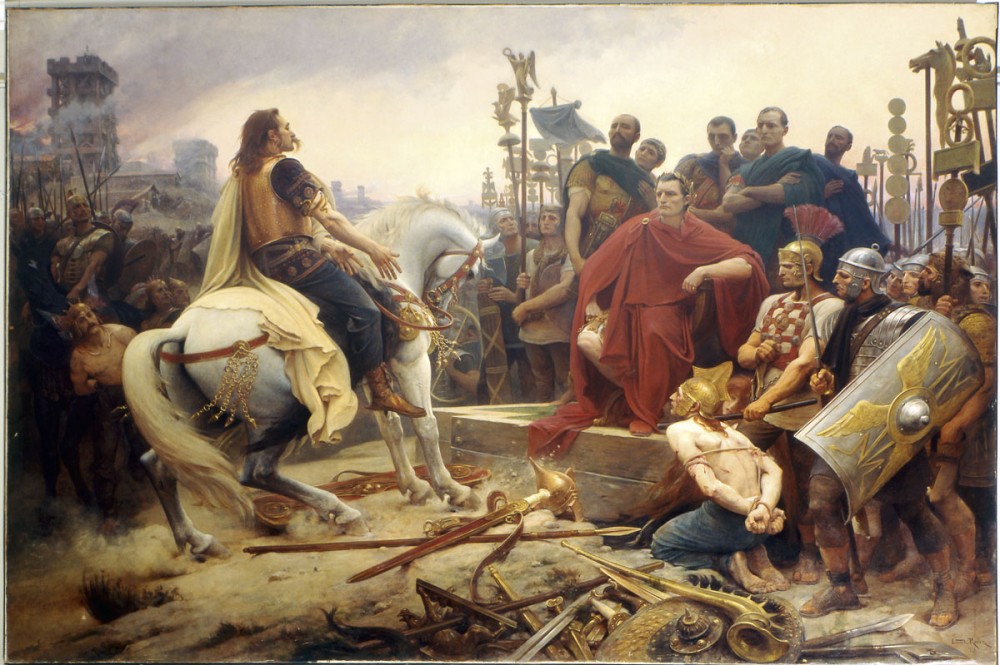 |
| Lionel Royer – Vercingétorix Throwing his Weapons at the Feet of Caesar |
Another beautiful painting by Royer. I am drawn to the rich palette of this piece. The face of the child is a little too stylized/sentimental for my taste, but it is still gorgeous. It reminds me a little of Frederick Leighton. Again, the rich reds and deep blues and greens against the pale yellow sky and skin makes me want to stop writing and go paint.
 |
| Lionel Royer – Madonna and Child |
Charles-Amable Lenoir (1860 – 1926) – Alright, you have probably heard of Lenoir or at least are familiar with his work. I was originally just going to have the five artists above, but Lenoir has been my desktop wallpaper for the last month or so and I thought I should share on the chance that some of you might not be familiar with his work. Like Royer above, Lenoir was a student of Bouguereau. Like Bouguereau he won the Prix de Rome and continued to receive praise and awards at the Salons in Paris throughout his career. I love the variety of texture and play of light and dark in his work. He was much looser in places than Bouguereau, but could really finish off a surface as well.
 |
| Charles Amable Lenoir – Odalisque |
I admire the contrast in detail in the painting below from the background to the figure. Just enough information was painted in to frame the woman. I also am drawn to the way he chose to light her face. Most of the face is in shadow, with just a spot on the nose, and a gradient on the cheek and neck. Her eyes are left to peer out from shadow at the viewer. For me her gaze switches from one of sorrow, to longing, to seduction.
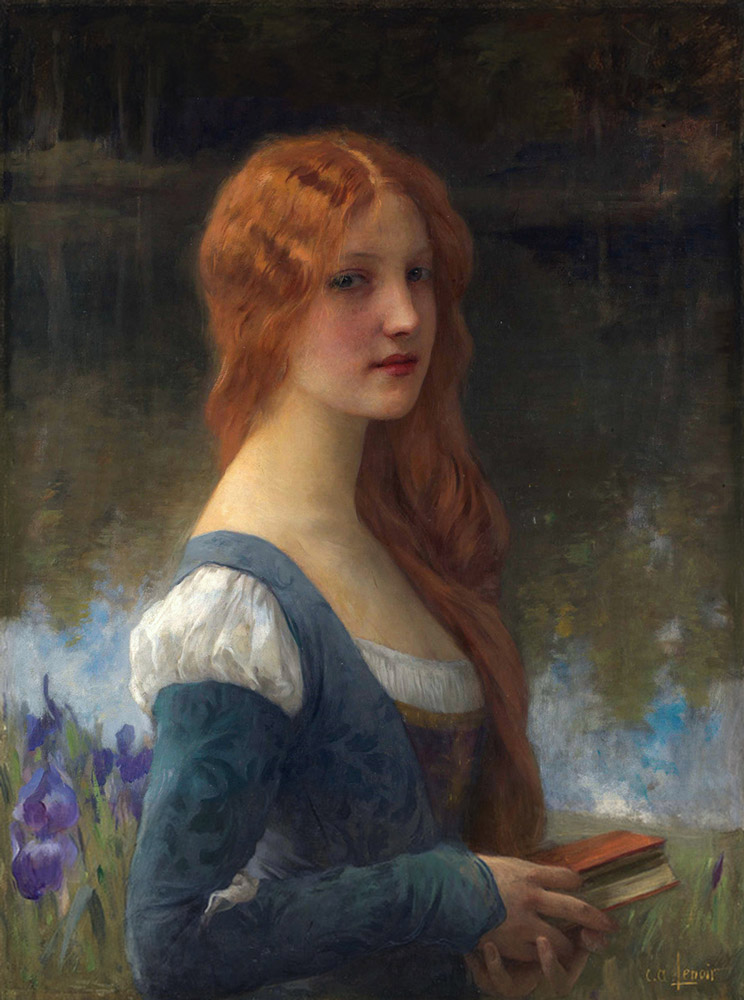 |
| Charles Lenoir – A la Recherche du Temps Perdu |
I wonder what book she is reading? It appears she has stopped reading to engage us, the viewer. Her finger still marks her place. It might be a series of book of the same name as the painting, by Marcel Proust, A la Recherche du Temps Perdu (translated to In Search of Lost Time or To the Return of Times Lost). The book was a novel released in seven volumes The second volume, In the Shadow of Young Girls in Flower, is a possible source. It was released in 1919. I could not find when this piece was finished though, which would be telling. If anyone knows, please let me know in the comments.
It is a beautiful work, one that I plan to study further either doing a copy, or emulating in a personal piece.
Conclusion
I really enjoy writing about paintings. It find that I discover more about them when I do so. I also find that I commit them to memory more thoroughly. I highly recommend it. Take one of your favorite works and write a few paragraphs about why you like the piece, allowing your eye to move around the work and describe what you see.
Thanks for taking a look at these artists and some of their paintings with me. If you have any other wonderful artists that you have come across that you think might not by widespread, please share in the comments so that we can all enjoy!


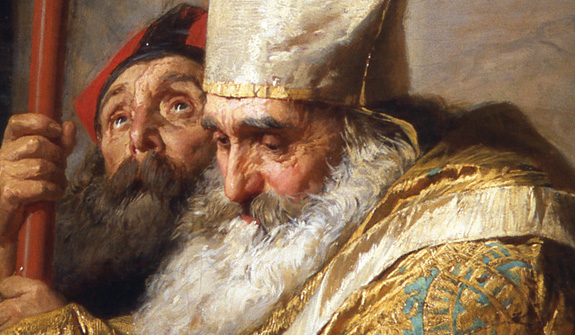
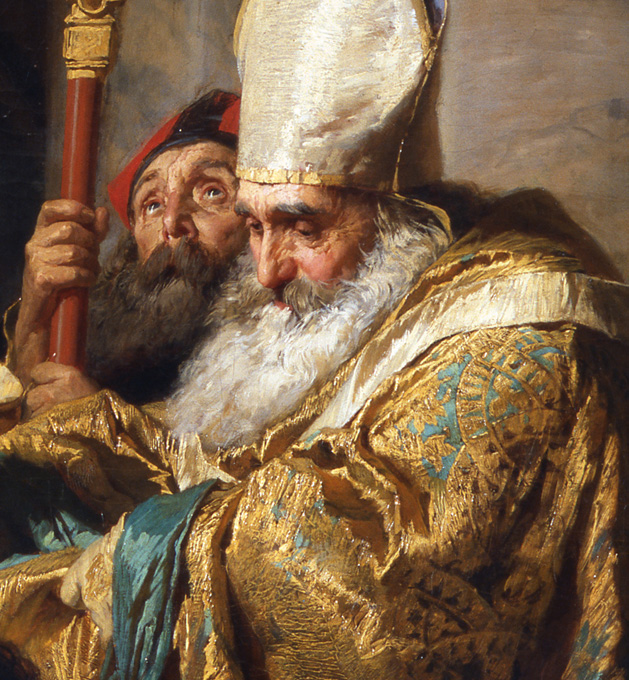
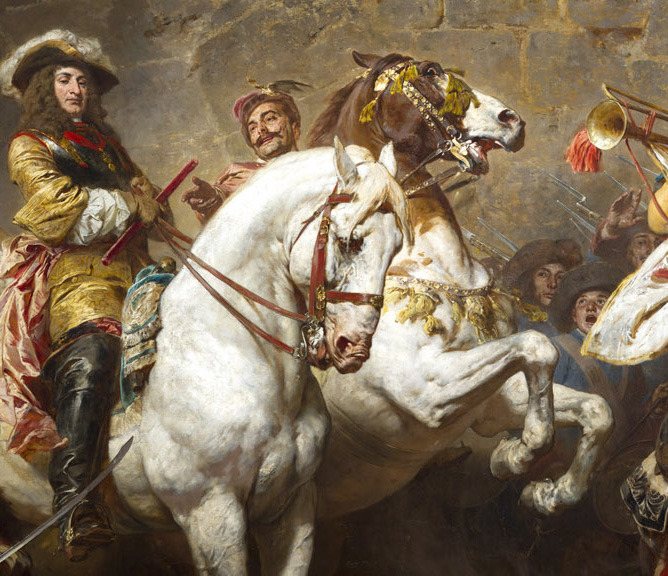
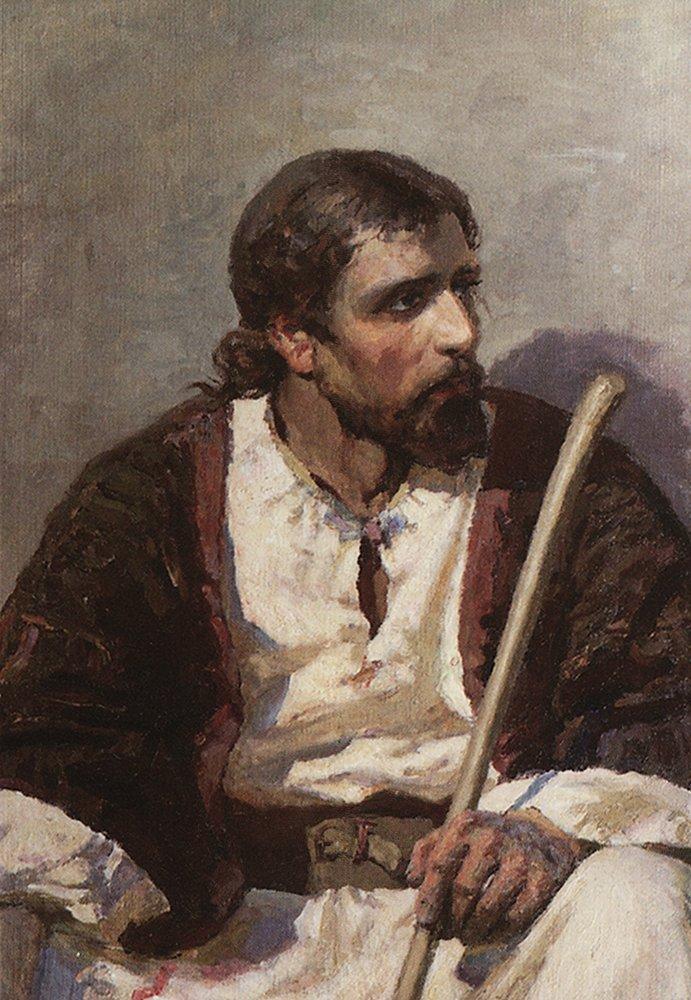
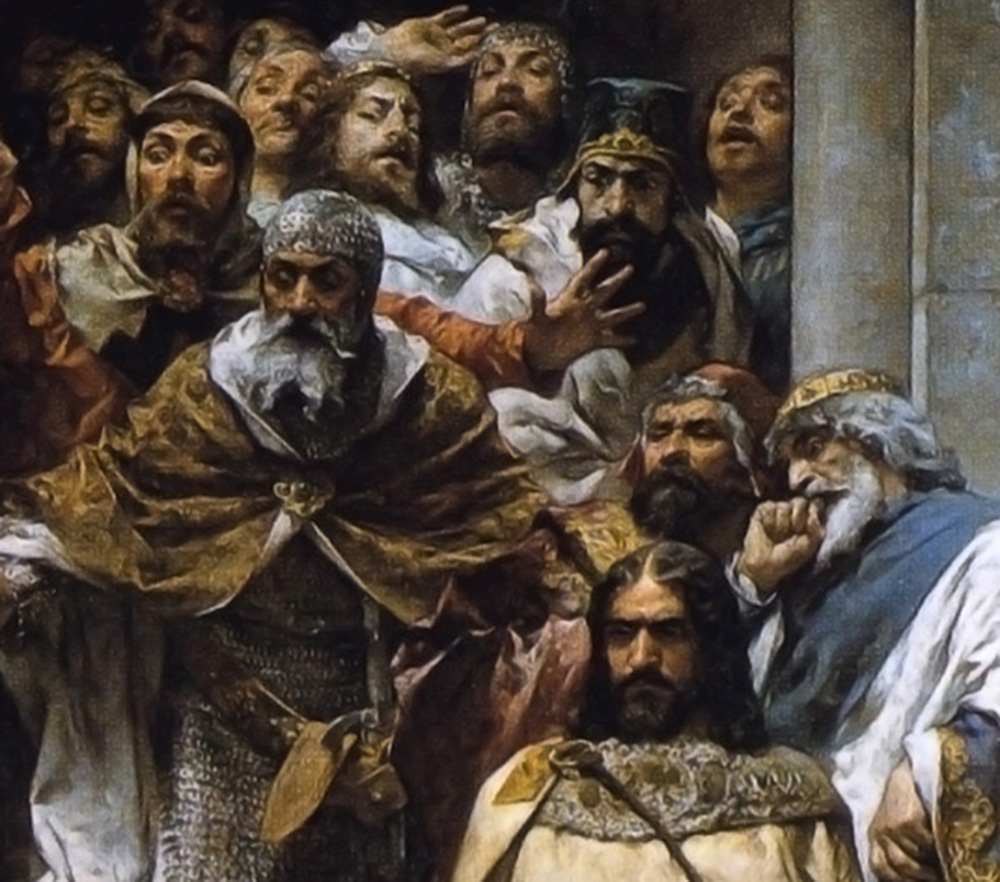
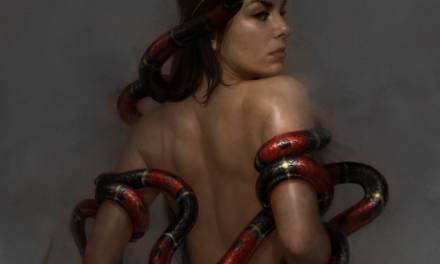
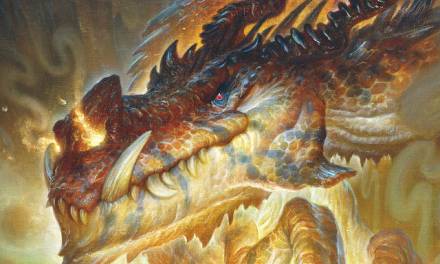
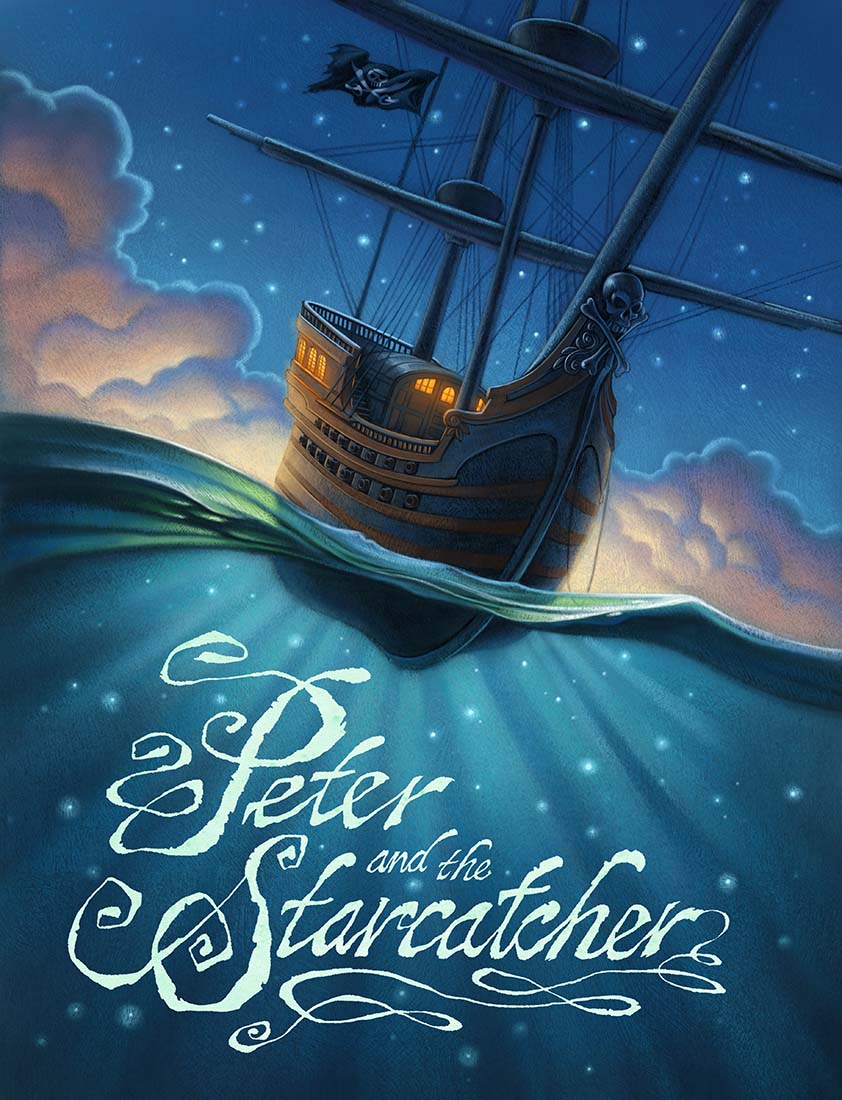
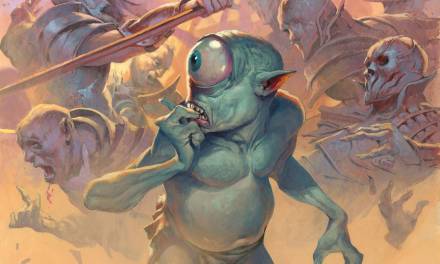

What a great post. I always like to see artists and work I have never seen Howard. I know the del Alisal, the composition is so stunning despite its equal division, but the others were mostly knew to me.Thanks!
Thanks Bill! I am happy that I was able to introduce a few new artists. Whenever I come across an artist's work that I haven't seen before, it makes me feel like an explorer setting foot on undiscovered country. It seems that most of the new stunners lately have been showing up out of eastern European countries, like Vojtech Hynais. I should have included him in this post. He is unreal. I have only seen few of his pieces on the internet, but I would include him in my top 10 from what I have seen. Check these out Bill:
http://goo.gl/Sh2t0i
http://goo.gl/uCp5gA
http://goo.gl/YLC4TK
http://goo.gl/WoH7uu
and a higher quality shot of a different image:
http://goo.gl/ZCt8Fc
I hadn't heard of this guy until last year. What else am I missing!? Exciting.
Great picks, Howard. Whoa, that gruesome “headless” painting by del Alisal is so captivating in an eew-way. But I think my favorite is that horse's wrinkled muzzle straining against the bit in Benczúr's painting. Thanks for sharing.
Wow very interesting!!, thanks for the post!! I had seen the work of Lenoir and Royer before, but did not know the rest, Gyula Benczúr is stunning O_ O, all these textures in the clothing and skin, just awesome! My favorite artist is a Mexican landscaper, and I think he is not well known even here in Mexico, at least for most people. I dont know if you know him, Jose Maria Velasco, I love his work in perspective and details in landscapes, here a few examples:
http://3.bp.blogspot.com/-4avE-uAeHfI/T_XST4MSf9I/AAAAAAAAFhc/-B3FcHTn7HU/s1600/velasco.jpg
http://3.bp.blogspot.com/-hZSxB0IezVM/Tx8_l_jvgsI/AAAAAAAANfQ/upBte5_hJf0/s640/josemariavelazco.jpg
http://3.bp.blogspot.com/-MCIqZiyV3-A/TYyZ_Cvc0cI/AAAAAAAAAEg/QNgbzPlPKlw/s1600/jmv1.jpg
http://1.bp.blogspot.com/-x78FlNcU5X8/TYyX5AFy68I/AAAAAAAAAEY/IADca0yK8zA/s1600/jmv4.jpg
Thanks again for the post!! ^_ ^ greetings!!
Wow, Thanks for sharing these Howard. They are all new to me but the kind of works that make me want to pick up a brush. The Bell of Huesca is about the most chilling thing I've ever seen in a painting. Real or imagined imagery.
Wow, awesome post. Thanks for posting. I've discovered a few new artists.
I don't know if you're familiar with the work of Isaac Israels, a late 19th century Dutch (impressionistic) painter.
My favorite work of him is “Transport of the Colonial Soldiers”, a huge painting. I was blown away by this work when I saw it in real life.
A not so good photo of it from wikipedia:
http://upload.wikimedia.org/wikipedia/commons/a/a9/Isaac_Israels_-_Transport_of_colonial_soldiers_-_Google_Art_Project.jpg
http://en.wikipedia.org/wiki/Isaac_Isra%C3%ABls
I love this post. There were some I had never heard of, thank you for sharing. I also enjoyed your breakdown of what attracts you to their pieces. <3
Great
Thanks for sharing! I'm still just awe-struck by that first Polenov painting you posted; the trees lining the building in the background are simply unreal, I can't believe they're painted.
Yes! Those horses are amazing. There is such clarity of form and light. It is so well done. I would love to see how he worked to achieve that effect. Humbling.
Beautiful Eyari! Velasco is new to me, thank you for sharing!
I agree, it is a wonderfully eerie and compelling painting. I wish I had painted it! 🙂
Erik, thanks for sharing, I love that painting! I need to see it in person too!
Thanks for giving it a read. It really is a lot of fun to write about paintings, I learn a lot!
Thanks! 🙂
I agree, the trees are something special. They are really graphic, almost flat, but they read so well with just the most subtle of value changes to describe the form. I really want to see this painting in person some day. Thanks for the response!
You are a nice blogger I love your blog so much help for my blog http://www.guruofmovie.com
Awesome post Howard! I only knew two of these guys. It's crazy how many great artists have been forgotten, luckily the internet is helping people resurface them. In particular, there are a lot of Spanish academic painters who were contemporaries of Casado del Alisal and were incredible artists, same thing with Russian academic painters and many painters from Eastern European countries.
You should make this a monthly or bi-monthly thing! It would really work haha.
May i suggest some Spanish guys:
Moreno Carbonero:
https://www.museodelprado.es/uploads/tx_gbobras/P06802.jpg
Sanchez Barbudo:
Last scene of Hamlet, https://www.museodelprado.es/imagen/alta_resolucion/P05610.jpg
Jose Jimenez Aranda:
http://encontrandolalentitud.files.wordpress.com/2013/09/penitentes-en-la-basc3adlica-inferior-de-asc3ads-josc3a9-jimc3a9nez-aranda.jpg
Antonio Fabres:
http://upload.wikimedia.org/wikipedia/commons/3/3d/Antonio_Fabr%C3%A9s_-_The_Drunkards_%28Bacchanal%29_-_Google_Art_Project.jpg
More: Villegas Cordero, Gisbert, Pradilla.
As a bonus, two more tasty Hynaises:
http://upload.wikimedia.org/wikipedia/commons/9/92/Vojt%C4%9Bch_Hynais_Divka.jpg
http://upload.wikimedia.org/wikipedia/commons/4/48/Hynais_Lezici_akt.jpg
Keep up the good work!
Great informative article! Thanks for sharing Howard. I am inspired by these painters. I hope you will write more in the future.
Howard, thank you for this post. I had luck to see Benczur's Batism of Vajk in person. Couldn't take my eyes off it for nearly half an hour. I saw many truly exquisitely painted pictures, but this one ranks among the best.
Unreal, indeed.
I posted larger image on my blog, for those interested: http://tinoradman.wordpress.com/2011/01/08/gyula-benczur-the-baptism-of-vajk/
Of course, no photo does this piece a justice.
Valentino